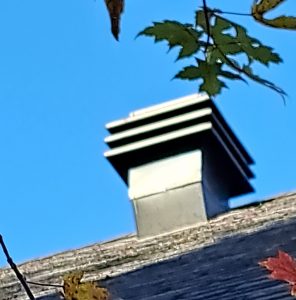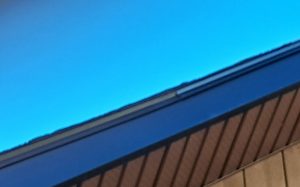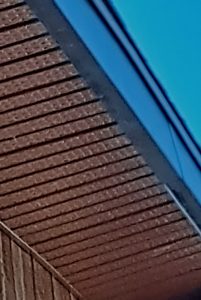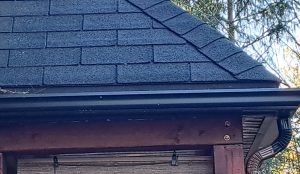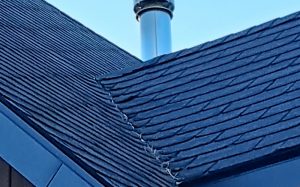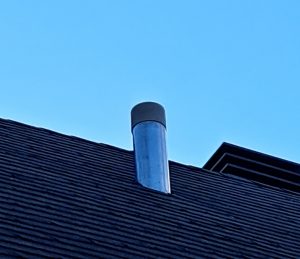Understanding these key terms can empower you to communicate effectively with roofing professionals and make informed decisions regarding your roof maintenance, repairs, and replacements.
This roof terms glossary is part of the Homeowners’ Roof Repair and Replacement Guide.
Table of Content
Home Roof Glossary: 20 Key Terms
Roof Pitch: The steepness or slope of a roof, expressed as a ratio of vertical rise to horizontal run. It determines the roof’s aesthetic appearance and its ability to shed water and snow.
Flashing: Thin metal strips or sheets installed at roof intersections, valleys, chimneys, vents, and other areas to prevent water from seeping into the structure. Flashing helps direct water away from vulnerable areas.
Underlayment: A protective layer installed beneath the roofing material to provide an additional barrier against water infiltration. It is commonly made of felt or synthetic materials and acts as a secondary defense against leaks.
Shingles: Individual overlapping roof coverings made of various materials, such as asphalt, wood, metal, or slate. Shingles provide protection against weather elements and enhance the visual appeal of the roof.
Ridge Vent: A ventilation system installed at the peak of a roof to allow air circulation and release trapped heat and moisture from the attic or roof space. It helps regulate temperature and prevent condensation.
Fascia: The vertical board installed along the edge of a roof-line. It supports the lower edge of the roof and provides a surface for attaching gutters. The fascia is often horizontal but on pitched roof it follows the roof angle.
Soffit: The underside of the eaves, extending from the outer edge of the fascia to the wall of the house. Soffits often have vents to allow fresh air into the attic and promote proper ventilation.
Eaves: The lower edges of a roof that overhang the walls of a building. Eaves protect the walls from water runoff and provide shade.
Gutter: A channel or trough fixed along the edge of the roof to collect and direct rainwater away from the building’s foundation. Gutters prevent water damage and help maintain the integrity of the structure.
Valley: The intersection where two roof slopes meet. Valleys are susceptible to water accumulation and require proper flashing and waterproofing techniques.
Dormer: A structural element that projects vertically from a sloping roof, creating additional headroom and window space in an attic or upper floor.
Ice Dam: A ridge of ice that forms at the edge of a roof, preventing melting snow from properly draining off the roof. Ice dams can cause water to seep under shingles, leading to leaks and roof damage.
Vent Pipe: A pipe that protrudes through the roof to vent gases from plumbing fixtures or appliances, such as toilets, sinks, or water heaters. Proper sealing and flashing are essential to prevent leaks around vent pipes.
Rafter: The inclined structural beams that support the roof’s weight and transfer it to the walls of the building. Rafters provide the framework for the roof structure.
Truss: A pre-engineered framework of interconnected beams and triangles used to support the roof. Trusses provide strength, stability, and efficient distribution of the roof load.
Decking: The base layer or substrate of the roof to which the roofing material is applied. It can be made of plywood, OSB (oriented strand board), or other materials.
Ventilation: The process of allowing air to circulate in and out of the roof space or attic. Proper ventilation helps regulate temperature, reduce moisture buildup, and prolong the lifespan of the roof.
Drip Edge: A metal flashing installed along the edges of the roof to direct water away from the fascia and prevent water damage to the underlying structure.
Ice and Water Shield: A self-adhesive waterproofing membrane installed on the roof deck in areas prone to ice dams or heavy rainfall. It provides an extra layer of protection against water infiltration.
Valley Flashing: Specialized flashing installed in the valleys of intersecting roof slopes to ensure proper water runoff and prevent leaks.
